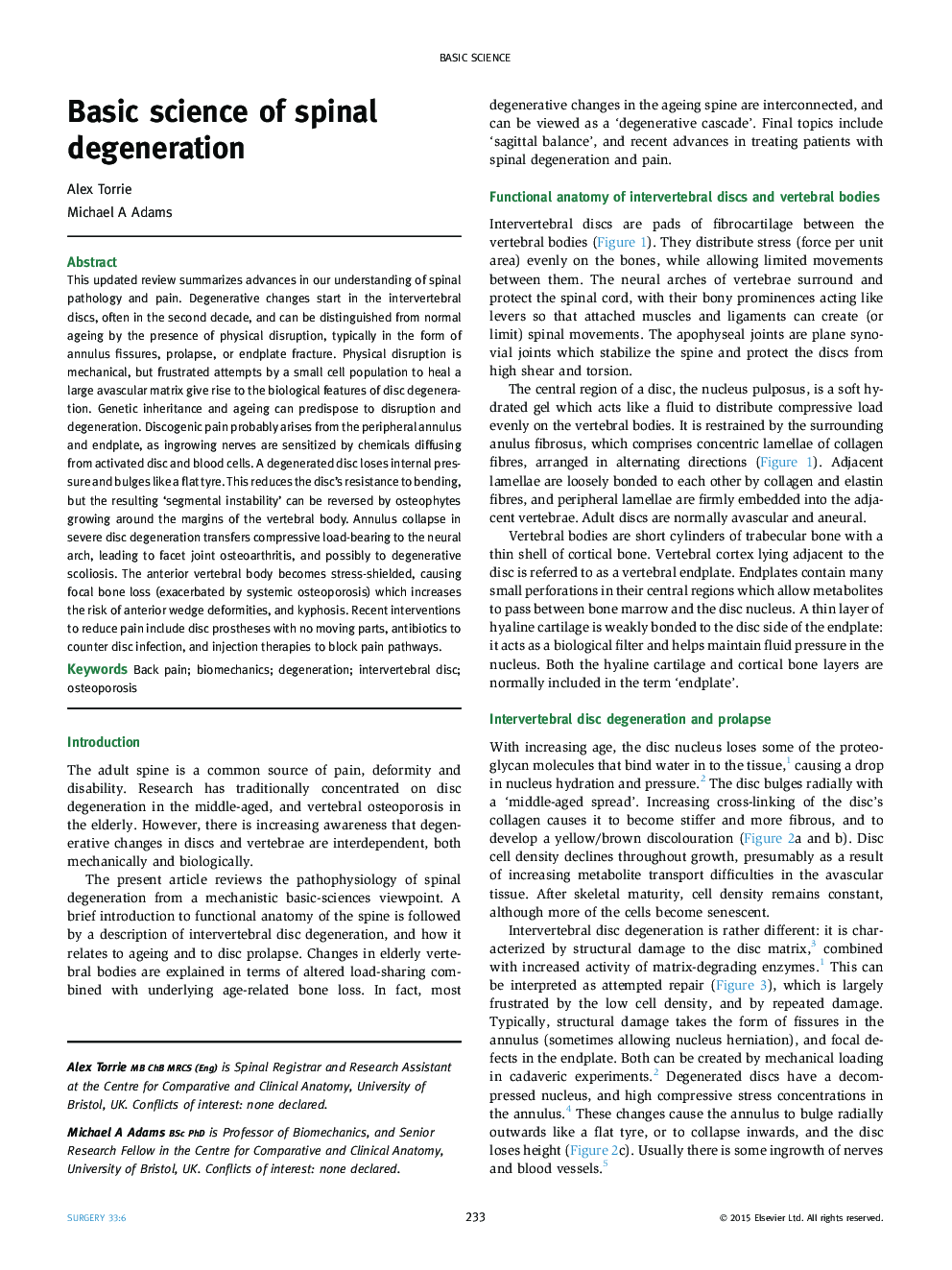| کد مقاله | کد نشریه | سال انتشار | مقاله انگلیسی | نسخه تمام متن |
|---|---|---|---|---|
| 3838338 | 1247713 | 2015 | 5 صفحه PDF | دانلود رایگان |
This updated review summarizes advances in our understanding of spinal pathology and pain. Degenerative changes start in the intervertebral discs, often in the second decade, and can be distinguished from normal ageing by the presence of physical disruption, typically in the form of annulus fissures, prolapse, or endplate fracture. Physical disruption is mechanical, but frustrated attempts by a small cell population to heal a large avascular matrix give rise to the biological features of disc degeneration. Genetic inheritance and ageing can predispose to disruption and degeneration. Discogenic pain probably arises from the peripheral annulus and endplate, as ingrowing nerves are sensitized by chemicals diffusing from activated disc and blood cells. A degenerated disc loses internal pressure and bulges like a flat tyre. This reduces the disc's resistance to bending, but the resulting ‘segmental instability’ can be reversed by osteophytes growing around the margins of the vertebral body. Annulus collapse in severe disc degeneration transfers compressive load-bearing to the neural arch, leading to facet joint osteoarthritis, and possibly to degenerative scoliosis. The anterior vertebral body becomes stress-shielded, causing focal bone loss (exacerbated by systemic osteoporosis) which increases the risk of anterior wedge deformities, and kyphosis. Recent interventions to reduce pain include disc prostheses with no moving parts, antibiotics to counter disc infection, and injection therapies to block pain pathways.
Journal: Surgery (Oxford) - Volume 33, Issue 6, June 2015, Pages 233–237
